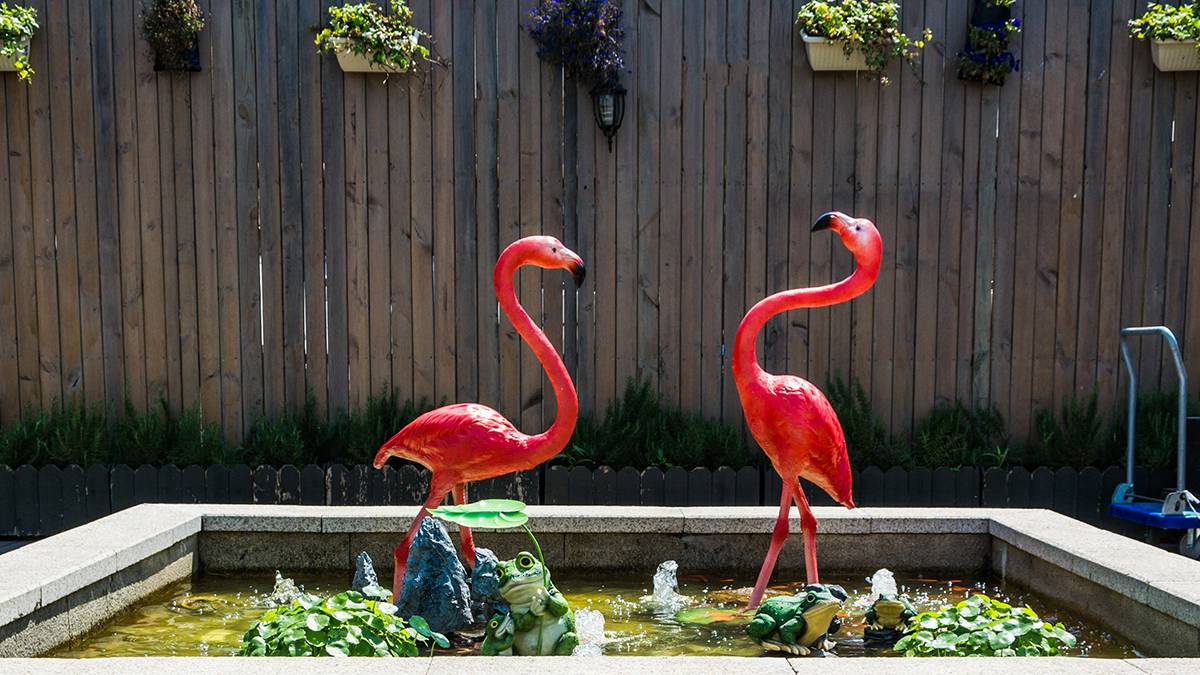Garden Decor Trends for 2025: What’s In & What’s Out
Elevate Your Outdoor Space with These Fresh Looks for the New Year
The garden is no longer just a backdrop — in 2025, it becomes the statement. Whether you’re working with a sprawling backyard or a small city patio, the right decor can transform any outdoor area into a personal retreat.
This year’s trends blend sustainability, style, and self-expression. Here’s what to expect (and get inspired by!) in garden design for the year ahead.
- Sculptural Centerpieces Take the Spotlight
Big, bold, and artful — outdoor sculptures are more popular than ever. From abstract forms to custom painted animals, these pieces create focal points that elevate the entire space.
Pro tip: Place statues near walkways or garden beds to guide the eye and enhance flow.
- Natural & Textured Materials Rule
Expect to see more stone, raw wood, and rusted metal textures in 2025. These materials bring warmth, contrast, and authenticity — especially when mixed with greenery and colorful blooms.
Try this: Add a carved wood bench, a terracotta planter wall, or a rusty patina sculpture for organic charm.
- Wellness-Inspired Garden Corners
Gardens are becoming sanctuaries. Think meditation corners, zen-inspired accents, and calming features like water bowls or smooth stone pathways.
Statues to try: Buddha figures, seated animals, or peaceful abstract shapes.
- Pops of Bold Color
While neutrals still have their place, vibrant color is back. Expect painted sculptures, ceramic tiles, and even bold furniture pieces to appear in trend-forward gardens.
Top colors for 2025: Cobalt blue, sunset orange, jade green, and deep berry.
- Whimsy and Personality Over Perfection
Say goodbye to overly manicured spaces — and hello to fun, story-filled gardens. From quirky mailboxes to playful flamingos, people are embracing decor that reflects their personality.
Tip: Mix high and low — pair elegant sculptures with something fun and unexpected for a modern eclectic vibe.
| Trend | What It Means | Implications for Decorative / Sculptural Elements |
|---|---|---|
| Native Plants & “Nativars” | Gardens are leaning into regionally adapted plants that require less water, fertilizer, and maintenance. (GardenDesign.com) | Sculptures can be designed to complement native plant palettes (earth tones, natural textures), integrate into native garden beds, or even double as habitat features (e.g. bird perches, insect hotels). |
| Redefining Perfection / Wild & Naturalistic Aesthetic | Instead of perfectly trimmed lawns, there’s growing acceptance of a more organic, less manicured look—leaves, seed heads, meadows, pollinator-friendly plantings. (GardenDesign.com) | Decorative art can lean “wabi-sabi” (beauty in imperfection), pieces with patina, asymmetry, or modular forms that blend into natural layouts. |
| Edible + Ornamental (Edimentals / Foodscaping) | Gardens are integrating edible plants—herbs, vegetables, fruit—alongside ornamental plantings. (Gardenary) | Sculptural planters, trellises, and decorative support structures that double for edibles could be a niche. Think artful tomato cages, herb towers, etc. |
| Water-Wise, Climate-Resilient & Fire-Resistant Garden Design | Drought-tolerant plants, smart irrigation, rainwater catchment, and selecting fire-safe species. (GardenDesign.com) | Use materials that age well without degradation (e.g. weather-resistant metals, composites), design sculptures to channel or slow water (rain chains, sculpted downspouts), or even heat-resilient features. |
| Outdoor Rooms & Multifunctionality | Gardens are no longer just planting zones — they’re extensions of the home: seating areas, lounges, dining, workspaces, play zones. (This Old House) | Sculptures can anchor zones, become focal points in outdoor “rooms,” or even double as functional art (seating sculptures, sculptural lighting, art screens for shade). |
| After-Dark Ambience & Lighting | Lighting in pathways, uplights, glowing sculptures, and nighttime-focused design are becoming big. (blog.techo-bloc.com) | Sculptures that are illuminated, light-responsive, or glow in some way will stand out. Think LED infusion, solar-powered lighting, or reflective surfaces. |
| Minimalist / Calm Sanctuaries | In contrast to maximalist gardens, there’s also a movement toward serene, pared-back, meditative spaces. (blog.techo-bloc.com) | Sculptural pieces that are elegant, simple, and unobtrusive — for example, slender stelae, elegant stone monoliths, or smooth forms that recede into the garden. |
| Warm Neutrals & Earth Tones in Hardscape / Decor | The “cold grays” era is softening—backsplashes, pavers, and decor lean warmer, creamy, and sand tones. (blog.techo-bloc.com) | Sculptures using warm-toned metals (weathered bronze, copper, rusted steel), natural stone, or patinas that echo the soft palette of newer hardscapes will integrate better. |
| Front Yard / Street-Facing Gardens as Showcase Spaces | More people are putting gardens on display—front yards are becoming living installations with pollinator zones, edible plantings, and art. (The Spruce) | Sculptures aimed for street view visibility (low-maintenance, durable, high-impact) can have strong appeal. |
| Tech & Smart Features in the Garden | App-controlled irrigation, smart pergolas, sensors, automated shading, lighting systems. (This Old House) | Integrate sculpture with tech — e.g. sensor-activated kinetic art, light-responsive elements, or art that changes with weather. |
Final Thought
The garden is your canvas — and 2025 is all about turning that canvas into something expressive, inviting, and uniquely yours. Whether you’re investing in weatherproof art or just swapping out planters, the right touches can refresh your space and lift your mood.
Need a starting point? Begin with a piece that makes you smile — and build your outdoor haven from there.
